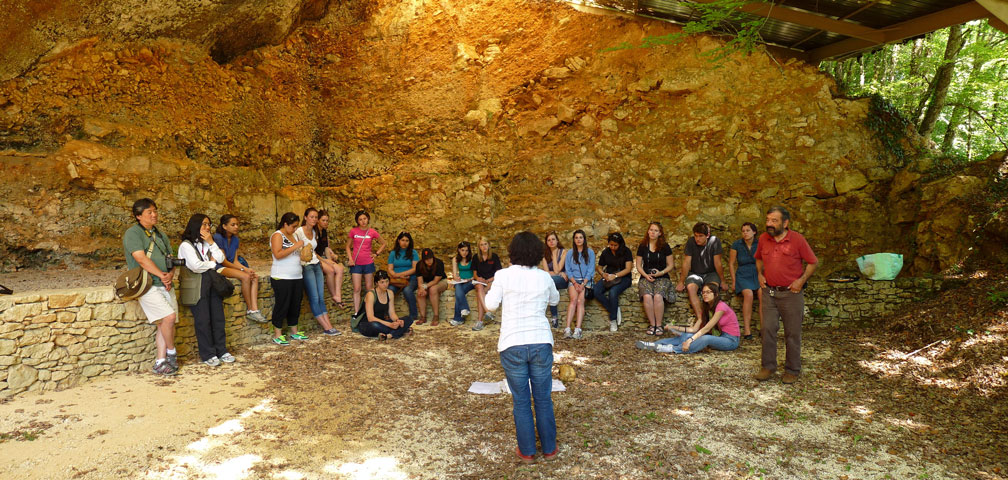

|
|
|
| Anthropologist and primatologist at Princeton university in New Jersey (USA), Professor Alan Mann listening with his students to the lecturer from the Centre des Monuments Nationaux, Cécile Gizardin, as she introduces them to the prehistoric site at La Ferrassie. He then shows his students the burial place of one of the seven Neanderthals found there last century. |
|
|
|
|
|
|
| The diggers’ first ambition was to find undamaged archaeological levels: mission accomplished. Alain Turq reveals prehistoric remains that had got buried throughout the ages - such as this cobble appearing on the surface and which was once used as a hammer stone for flint knapping. |
|
|
| Dennis Sandgate discovering a biface indicating the presence of a Mousterian layer (the culture ascribed to Neanderthal) which calls for precise dating. |
|
|
| To the left, this small knife is said to be from the Châtelperronian culture, the “transition” culture between Neanderthal and Cro-Magnon, a period in history which kindles many a heated ideological debate: did one of them copy off the other and, if so, which one was it? In the centre, this small, crooked blade is typical of the Aurignacian culture ascribed only to Cro-Magnon, our direct ancestors who came after Neanderthal about 30,000 years ago. |
|
|
|
|
| Article | Menu |